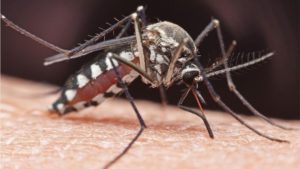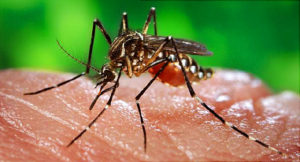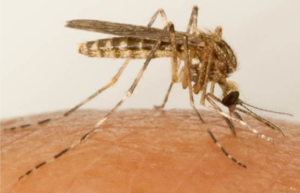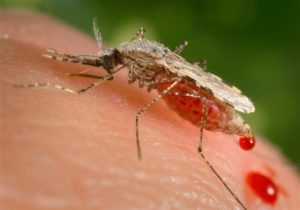It is much easier than you think. If you are overweight think about getting into your therapeutic body mass index of weight that can take 6 months to even less or for some take a year up to two years. Whatever time it takes to get in your therapeutic range it’s worth the while in getting yourself at a weight that allows you to start exercising=being active. When you reach that point in life it allows you to do so much more with your life than sit on the side lines but instead play on the field with a big view of more enjoyment and activity. Anyone can do it; you just need to have the power and perseverance. The ending results are worth it for one person only, YOU, but it will give people around you a positive impact as well. If you have a condition that doesn’t allow you to do the types of activity that I mentioned earlier there is always home remedies from treadmills, using dumb bells in light weight lifting (2.5lbs. to 20lb.), sit ups, just walking around the yard or block or using the pool you may have doing laps. You can figure it out with the help of asking your doctor (For people with any disease/illness or condition it is recommended to go to the physician first to get clearance in getting activities that you’re allowed to do). Always a health fitness coach could give direction but not replace a doctor for clearance in activity).
The foods that will help your muscular system in staying healthy: Eating well on a consistent basis is also essential in maintaining healthy muscles. The National Institute of Heath recommends you should eat 6 small meals a day. All meals being at the same level of calories, carbohydrates, protein, fat, and sugars (fairly low) excluding your one meal out of the 6 meals being high in protein (lean meats and more green vegetables primarily. These meals are 3 hours apart. By doing this you keep your sugar level at a steady rate (no peaks in sugar level). Keeping your glucose (sugar) level steady you prevent fat storage occurring. When we have too much sugar left in the bloodstream, that we got after digestion of a meal, first we use up any sugar that was transferred into our bloodstream as fuel but by absorbing it into our tissues for the energy but when we have used all the sugar we needed at that point and still have extra glucose (due to a large meal) the extra sugar in the blood gets stored somewhere in the body equaling fat storage that equals weight gain. Eat 2 or 3 moderate to large meals a day you’ll always run into this problem (extra sugar being stored in your body). To prevent this from happening you eat 6 small healthy meals a day which are lower in calories, carbs, fat and sugars including the portions, that’s the logic. Know that all carbohydrates, all sugars (calories) with certain fats when entering the stomach after eating break down into further simple or complex sugars. Than they transfer into the bloodstream when digestion is done in the stomach=more sugar than just the amount that is present on the back of the container, regarding the food that you’re eating at that time. The 6 healthy meals a day are not saying 6 big macs or small whoppers. I am talking about healthy foods eaten by the 4 food groups. In making your muscles healthier begin to make better choices with each meal. Seek to replace saturated fats and refined sugars with healthy fish (high protein) but not daily (have it 2 to 3 times a week) and fiber based foods (daily). Other suggestions include eating your first meal of the day within 30 minutes after waking up. Lastly and very important drink water (at least eight glasses a day or if possible 2 to 3 liters a day). Drinking this much helps your muscles in doing their function better, they move easier (think of the fluid helping the muscle in not drying out which allows the muscle to function better in range of motion).
Health habits are important. Unhealthy habits that have that an impact on your muscles is:
-Stress, which can be brutal for your entire body systems including your muscular system. Having emotional stress places an inordinate amount of demand on your muscles. Ways to conquer the stress is relaxation therapy (ex. Next time you have an emotional stress (angry to sad) focus and sit back with take 10 deep breaths, tired after work go to bed earlier about ½ hr. to an hour and play soft music to fall off to sleep, still not working than do EXERCISE-it tires your stress and eat healthy foods not junk).
-Poor diet: To build muscle and lose fat, you need a variety of proteins, veggies, fruits, carbs, and healthy fats properly portioned for your meals. Eating a protein helps build and maintain your muscles. It also helps fat loss because protein has a higher thermic effect than carbohydrates or fats.
There is not just one food to eat or one type of exercise to do or one healthy habit to perform that will keep you healthy, there are choices. Come onto my website which is no fee, no charge, no hacking, it will just let you check us out to look further in understanding how to take a shape for your life with Dr. Anderson and even myself as your health coach in helping you learn what a healthier diet is using with all 4 food groups in 6 meals, with knowing the exercise right for you and what healthier habits are for a better muscular system and overall life. It allows you to make all the decisions in what you want to do regarding what to eat (diet), exercise/activity, and what healthy habits you want to add in your life. We just provide the information and healthy foods in your diet and you decide if you want them. I happen to eat them 5 times out of the day with one meal being my meat or fish (high protein) and vegetable (lean and green). You make all the choices, like I do. Wouldn’t you want to be stronger, more active, with less disease/illness for yourself and for even others throughout the nation including the future generations? Well than click on over to healthyusa.tsfl.com and take a look with what Dr. Anderson and myself can provide for you. I have been in the health care system over 25 years as a Registered Nurse and I know you or anyone will benefit from this information (I lost over 20lbs. so far). Take a peek.



